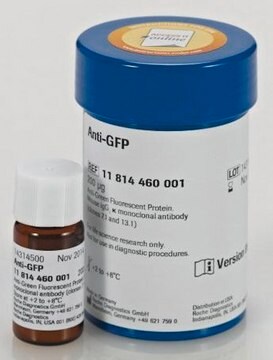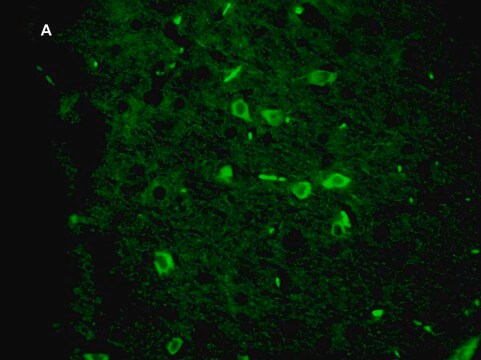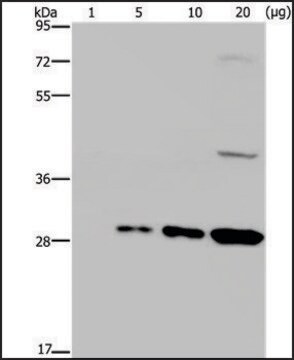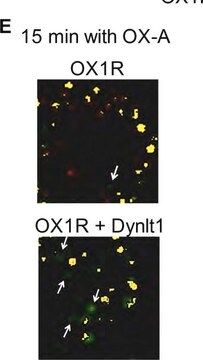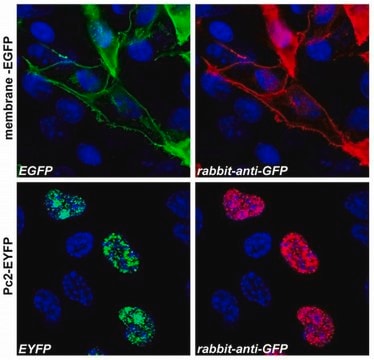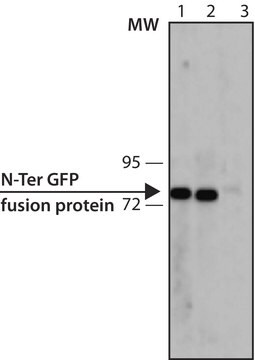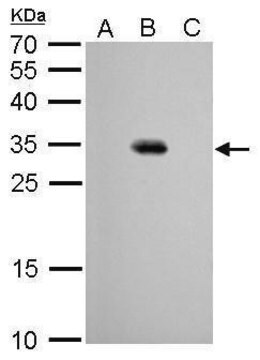G6795
Anti-Green Fluorescent Protein (GFP), N-terminal antibody, Mouse monoclonal
clone GSN24, purified from hybridoma cell culture
Synonym(s):
Anti-GFP
About This Item
Recommended Products
biological source
mouse
conjugate
unconjugated
antibody form
purified immunoglobulin
antibody product type
primary antibodies
clone
GSN24, monoclonal
form
buffered aqueous solution
mol wt
antigen 27 kDa
concentration
~2 mg/mL
technique(s)
western blot: 1-2 μg/mL using GFP fusion proteins expressed in extracts of transfected cells
isotype
IgG1
shipped in
dry ice
storage temp.
−20°C
2-8°C
target post-translational modification
unmodified
General description
Specificity
Application
Biochem/physiol Actions
Physical form
Storage and Stability
Disclaimer
Not finding the right product?
Try our Product Selector Tool.
recommended
related product
Storage Class Code
10 - Combustible liquids
WGK
WGK 3
Flash Point(F)
Not applicable
Flash Point(C)
Not applicable
Certificates of Analysis (COA)
Search for Certificates of Analysis (COA) by entering the products Lot/Batch Number. Lot and Batch Numbers can be found on a product’s label following the words ‘Lot’ or ‘Batch’.
Already Own This Product?
Find documentation for the products that you have recently purchased in the Document Library.
Customers Also Viewed
Our team of scientists has experience in all areas of research including Life Science, Material Science, Chemical Synthesis, Chromatography, Analytical and many others.
Contact Technical Service

